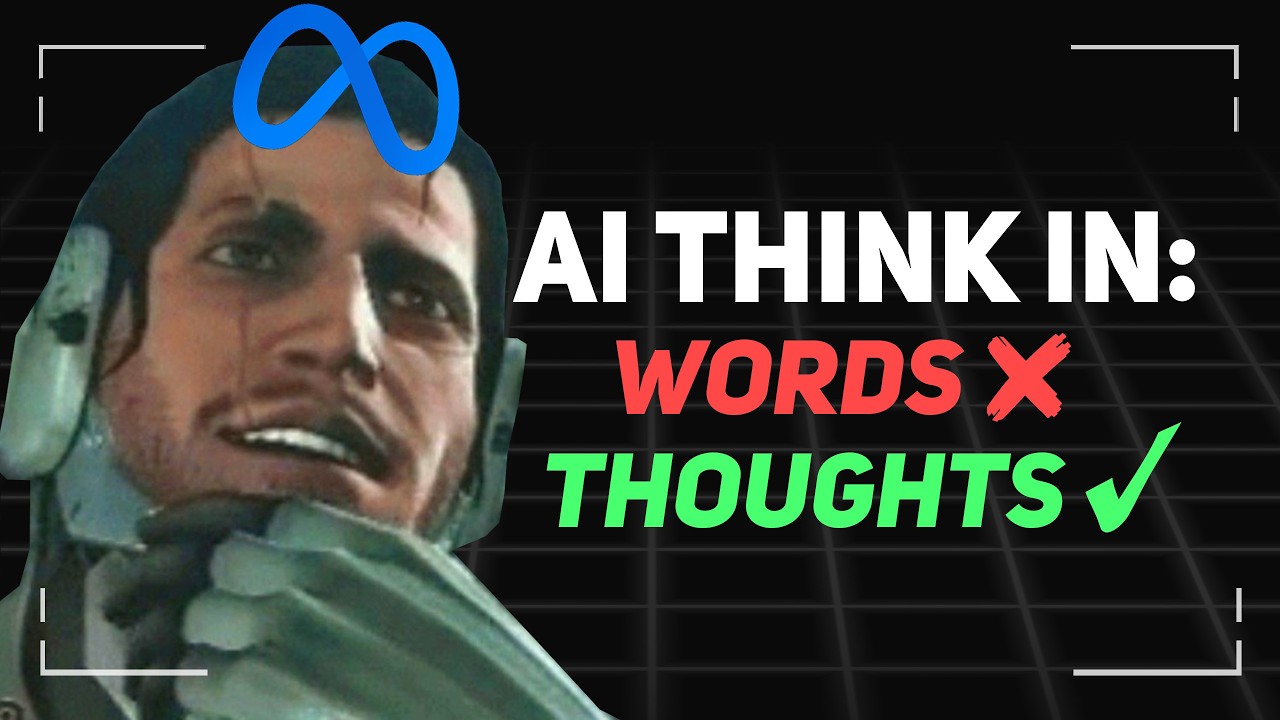The video explores Meta’s Coconut project, which enables AI models to reason without relying heavily on language by representing thoughts numerically in a latent space, allowing for more effective exploration of reasoning paths. It highlights a new recurrent depth approach that enhances reasoning performance through iterative thinking blocks, leading to more nuanced predictions and reducing the likelihood of errors.
The video discusses the advancements in reasoning AI models, particularly focusing on Meta’s new approach to AI reasoning without relying heavily on language. It highlights the evolution of AI models like OpenAI’s GPT-3 and Deep Seek R1, which utilize a chain of thought methodology to break down complex reasoning into manageable steps. This method allows models to clarify their logic and identify errors, ultimately leading to improved outcomes. However, the video introduces a twist: instead of micromanaging AI reasoning through process rewards, reinforcement learning can enable models to recognize that generating more words before answering a question can yield better results.
The video emphasizes the limitations of using language for reasoning, noting that human thought processes often do not rely on verbalization. Research suggests that language may not be optimized for internal problem-solving, as it can slow down reasoning. The video introduces Meta’s research project, Coconut, which proposes a latent space for AI models to represent thoughts numerically rather than through language. This latent space allows for lossless compression of information, enabling continuous thought processes that can be chained together, enhancing the model’s reasoning capabilities.
Coconut’s approach demonstrates that models can explore reasoning paths more effectively without the constraints of language. The video explains how this method leads to an increase in thoughts per step when tackling complex problems, allowing the model to evaluate different reasoning paths simultaneously. The researchers found that when decoding these continuous thoughts back into language, they aligned with intermediate steps for problem-solving, even though the model was not explicitly trained to do so.
The video also introduces a new paper on a recurrent depth approach to reasoning, which suggests that reasoning can be intensified by iterating a thinking block rather than generating more tokens. This method allows for deeper reasoning and more concise outputs, potentially capturing types of reasoning that are difficult to verbalize. The empirical results indicate that increasing the recurrence of the thinking block improves reasoning performance, and this approach does not require extensive training data or reinforcement learning.
Finally, the video concludes by discussing the implications of this new method for AI reasoning, suggesting that it could lead to more careful and nuanced predictions, reducing the likelihood of hallucinations. The recurrent block approach shifts the focus from generating tokens to thoughtful internal processing, making it more efficient and potentially more user-friendly. The video encourages viewers to engage with the content and consider subscribing to the creator’s newsletter for updates on cutting-edge AI research.
